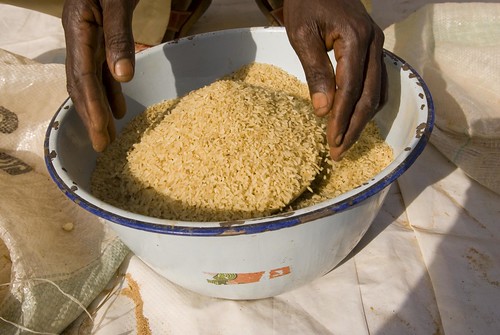food prices
“Saving food saves resources”— Tanja Pickardt
Mon, 09/22/2014 - 21:01 — Pramila Thapa
‘In general, one-third of the food produced is lost’ said Tanja Pickardt during a presentation at Tropentag. According to FAO, loss varies with type of the food produced. For example, the loss in grain is less as compared to fruits, vegetables, and dairy products. Pickardt said that it is necessary to quantify the food loss before making policy decisions, but it is very difficult to quantify the actual quantity of food wasted. To illustrate this point, she showed a video by FAO titled "Food Wastage Footprint 2". The environmental and social consequences are more difficult to quantify than economic losses. Also in this video, we can see different ways to reduce food loss and alternative uses of wasted food.
 (Continue...)
(Continue...)
 (Continue...)
(Continue...)
Rushing for land
Tue, 05/03/2011 - 09:09 — De-Registered User
Food prices are 36% above the levels of a year ago and remain close to the 2008 peak, driven in part by higher fuel costs connected to instability in the Middle East and North Africa. With current double digit food price inflation in crisis-striken Egypt and Syria, a major World Bank report shows wheat, maize and soya costs have soared, requiring a relaxation of grain export controls and a rethink on biofuels.
"Already 44 million people have fallen into poverty since June 2010. If the food price index rises by just another 10% we estimate another 10 million people that fall into extreme poverty. And a 30% increase would add 34 million more people to the world's poor, who now number 1,2 billion" said World Bank President Robert Zoellick while presenting the World Bank's Food Price Watch last month.
Eager to capitalise on rising food and energy prices or shore-up their own country's food security, foreign investors are pouring in to lease or buy huge tracts of cheap land that governments have cleared of people in the developing world. This high-stakes global land rush is essentialy a third wave of outsourcing and is taking place in the largest recipient countries of humanitarian food and development assistance. From Ethiopia's lowlands to the hilltops of Madagascar, vast tracts of farmland and forests are being gobbled up by foreign investors creating super-sized farms.




